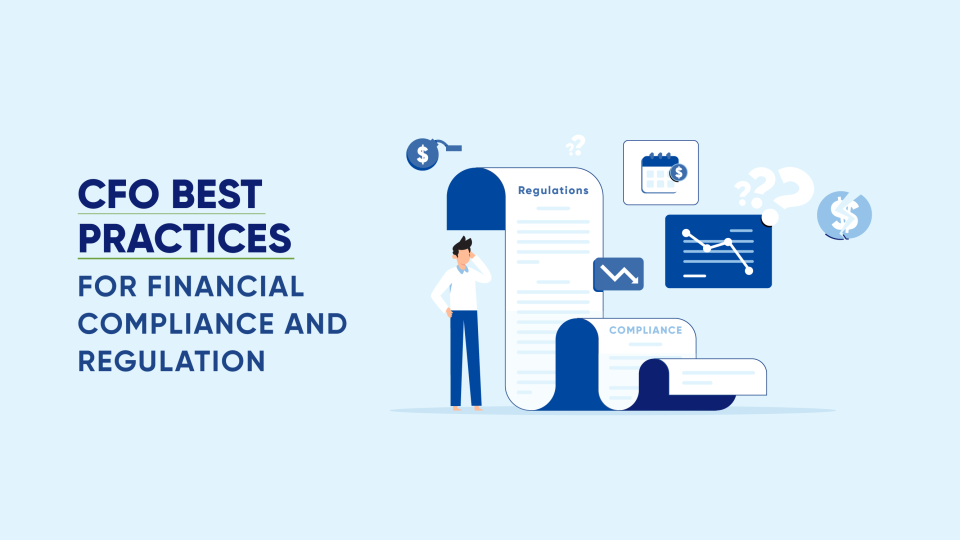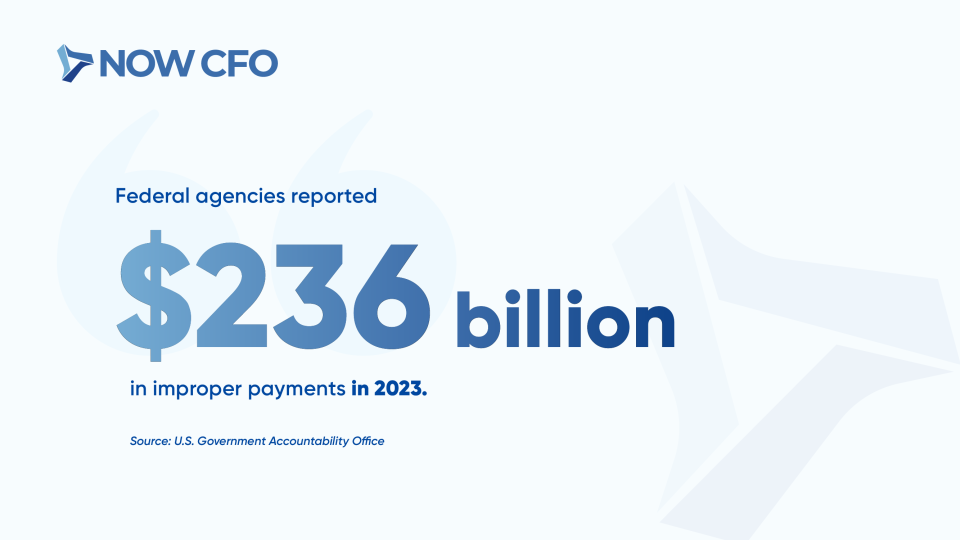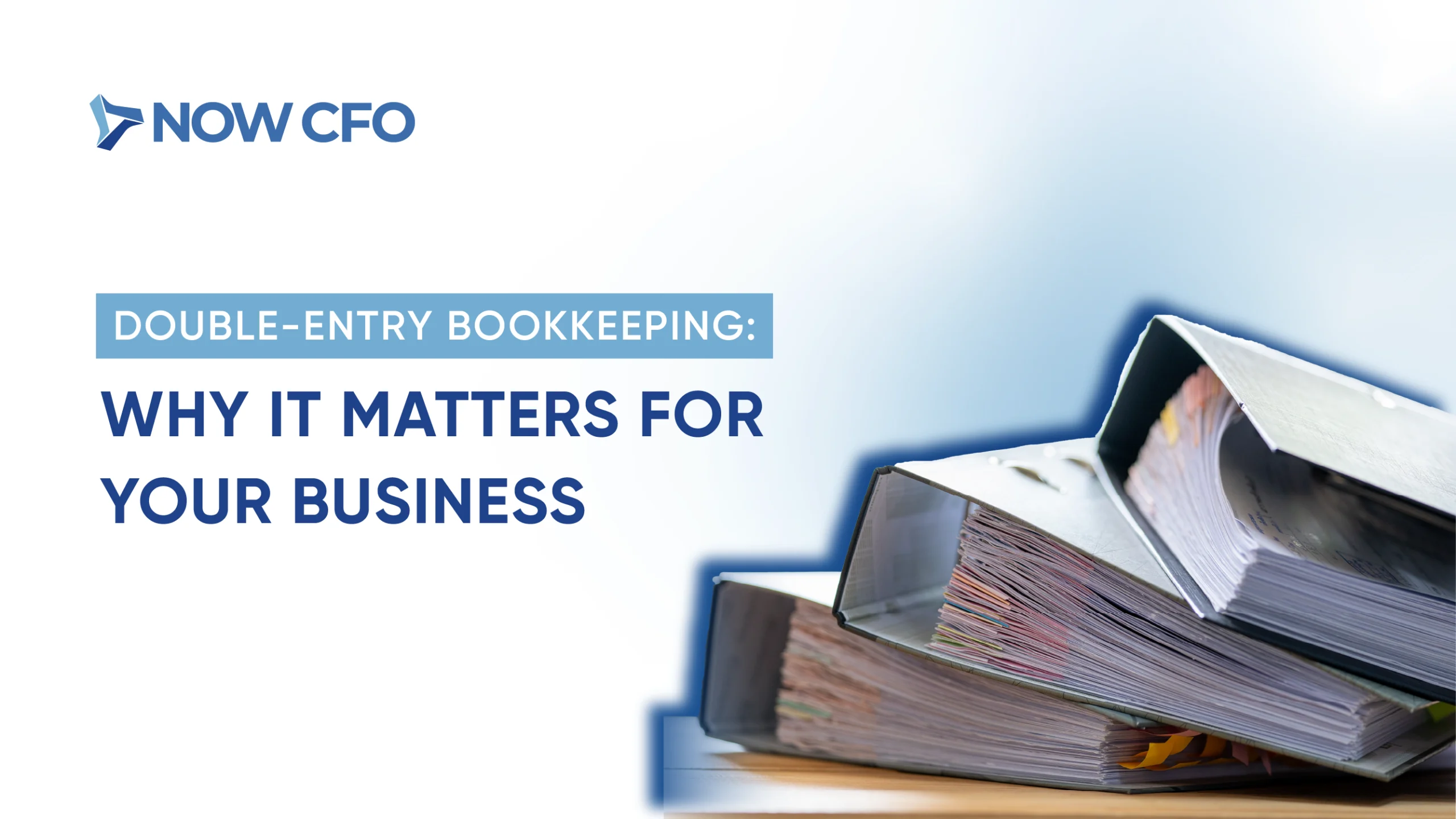
Financial integrity remains the cornerstone of sustainable growth. Financial compliance and regulation require clear frameworks, rigorous controls, and vigilant oversight to prevent costly errors.
In fiscal year 2023 alone, federal agencies reported $236 billion in improper payments underscoring the magnitude of non-compliance risks. CFOs who understand what financial compliance is, can translate complex mandates into practical workflows, reducing exposure and enhancing regulatory adherence.

The Importance of Financial Compliance for Business Success
Chief financial officers spearhead compliance and regulation to embed transparency and trust. Understanding financial compliance empowers teams to align policies with regulatory frameworks.
Defining Financial Compliance and its Role in Business
Financial compliance encompasses the policies, processes, and internal controls that ensure an organization meets statutory and regulatory requirements. By codifying procedures, CFOs provide clarity on responsibilities, streamlining audit trails, enabling accurate disclosure, and fostering a culture of accountability.
This framework underpins reliable financial statements and instills confidence in investors and regulators alike.
The Impact of Regulatory Non-Compliance on Business Health
Failing to comply has severe consequences:
- Elevated Costs: Firms with fewer than 20 employees bear an annual regulatory burden of $6,975 per employee, nearly 60% more than those with over 500 staff.
- Disproportionate Strain: Small businesses pay regulatory compliance costs that are 36% higher than large enterprises, diverting critical resources from core operations.
- Reputational Damage: Non-compliance can trigger public scrutiny, legal action, and loss of investor trust.
Key Regulations CFOs Must Navigate
Regulatory landscape demands CFO compliance strategies on every financial process, ensuring that teams operate within legal frameworks while driving business objectives.
Sarbanes-Oxley Act (SOX) And its Impact on Financial Reporting
The SOX revolutionized corporate governance by mandating stringent internal controls and executive accountability. CFOs must certify the accuracy of financial statements, document control procedures, and test effectiveness annually.
These measures bolster investor confidence and reduce fraud risk. By embedding SOX requirements into audit plans, organizations ensure real-time compliance and align with global best practices in financial reporting standards.
Tax Compliance Requirements and Reporting Standards
CFOs must translate complex tax laws into clear operational guidelines. Effective tax governance includes:
- Timely Filings: Submit federal and state returns by due dates, avoiding penalties.
- Accurate Calculations: Leverage automated tools to compute liabilities under current tax codes.
- Disclosure Transparency: Provide comprehensive footnotes for uncertain tax positions.
- Ongoing Monitoring: Review legislative updates to adjust provisions proactively.
A robust tax framework mitigates exposure and reinforces overall risk mitigation strategies.
International Financial Reporting Standards (IFRS)
Adopting IFRS enables multi-jurisdictional comparability and transparency. CFOs interpret IFRS’s fair-value measurement and revenue-recognition rules to present consistent global financial situations.
By training accounting teams on IFRS updates, leaders minimize misstatements and foster stakeholder trust. This alignment supports cross-border investments and streamline consolidation for subsidiaries operating under diverse local standards.
GDPR And Data Protection Compliance for Financial Data
Under GDPR, CFOs must safeguard personal data within financial systems. Key actions include:
- Encrypting customer information at rest and in transit.
- Maintaining records of processing activities for audit readiness.
- Conducting Data Protection Impact Assessments (DPIAs) on new financial platforms.
- Implementing breach-notification protocols within 72 hours of detection.
SEC Regulations for Public Companies
Public entities face rigorous oversight from the SEC. CFOs must:
- File quarterly (Form 10-Q) and annual (Form 10-K) reports with complete disclosures.
- Ensure XBRL tagging of financial statements for machine readability.
- Implement insider-trading policies and certify Sarbanes-Oxley compliance.
- Coordinate with legal teams on comment letters and registration statements.
In fiscal year 2024, the SEC filed 583 enforcement actions, securing $8.2 billion in penalties.
Learn More: What does an outsourced CFO do
Best Practices for Ensuring Financial Compliance
A robust framework combines culture, controls, and technology. Begin with strong governance, then layer in the tactical steps below so teams understand financial compliance.

1. Implement Robust Internal Controls and Financial Auditing Systems
Effective internal controls start with mapping high-risk cycles to identify points where errors or fraud might occur. Establish segregation of duties, automated approvals, and continuous monitoring dashboards so anomalies surface instantly.
Pair these controls with an annual internal audit plan that integrates both surprise audits and thematic reviews. According to the U.S. GAO, the IRS still has 42 open recommendations tied to internal-control weaknesses.
By documenting control of ownership, test frequency, and remediation deadlines, CFOs embed accountability into day-to-day operations and align with SOX compliance expectations.
2. Establish Clear Compliance Policies and Procedures
Before launching any initiative, codify expectations:
- Assign process owners for each regulation (SOX, GDPR, tax).
- Write step-by-step procedures for approvals, disclosures, and exception handling.
- Publish version-controlled manuals on the intranet and require electronic sign-off to verify reading.
- Set policy-change SLAs, for example, update manuals within 30 days of a new rule.
This clarity transforms abstract mandates into actionable; department-level tasks and supports best practices for ensuring financial compliance by eliminating ambiguity.
3. Ensure Accurate and Timely Financial Reporting
Reliable reporting hinges on disciplined close calendars and technology-driven reconciliations. Configure your ERP to auto-post recurring entries, flag out-of-period transactions, and lock periods once reviewed.
Use variance-analysis dashboards to notify managers when account balances deviate beyond tolerance. Align disclosures with financial reporting standards (IFRS or GAAP) and create a “red-flag” committee that meets mid-close to resolve issues quickly.
4. Invest in Compliance Training for Financial Teams
Policies fail without skilled people. Launch a multilayer training program that covers foundational regulations for new hires and quarterly refreshers on recent legal changes. Incorporate interactive case studies; restatement failures, privacy breaches; to keep sessions relevant.
Track completion in an LMS and tie participation to performance reviews. This investment reinforces financial governance and ensures staff can execute risk mitigation strategies under pressure.
5. Stay Updated on Changing Regulatory Requirements
Laws evolve; CFOs cannot rely on static frameworks. They must:
- Subscribe to Official Bulletins: Receive real-time alerts from the Federal Register, IRS Newsroom, and SEC.
- Participate in Professional Networks: Join CFO councils, compliance consortiums, and peer-to-peer forums.
- Conduct Quarterly Impact Analyses: Co-author memos with legal teams outlining implications for policies, systems, and training.
- Update Control Matrices Promptly: Reflect new requirements in control-testing schedules and evidence repositories.
6. Conduct Regular Compliance Audits and Risk Assessments
Continuous assurance processes detect evolving threats. CFOs:
- Perform Quarterly Internal Audits: Rate each control’s design and operating effectiveness and compare scores over time.
- Maintain a Live Risk Register: Catalog risks by likelihood and potential financial impact, updating mitigation plans as circumstances change.
- Benchmark Against External Reviews: Incorporate findings from external auditors to validate internal perceptions.
- Track Remediation Dashboards: Monitor open findings until closure, ensuring no deficiencies remain unresolved.
Learn More: CFOs and the role of financial analytics
How CFOs Can Mitigate Financial Risk Through Compliance
By integrating Financial Compliance and Regulation into risk frameworks, CFOs enhance financial governance and tighten risk mitigation strategies. Below, we explore core tactics to preempt and manage compliance risks.
Identifying And Addressing Compliance Risks Early
Proactive risk identification begins with mapping high-risk processes—tax reporting, SOX controls, and data privacy. CFOs deploy risk registers and scenario analyses to flag vulnerabilities before they materialize. In FY 2023, only 54 percent of federal CFO Act agencies fully complied with improper payment criteria, underscoring the need for early detection gao.gov. By prioritizing these insights, finance leaders can allocate resources efficiently and avert costly violations.
Managing Financial Data Transparency And Accuracy
To maintain regulatory adherence, CFOs:
- Implement Real-Time Dashboards: Monitor KPIs like revenue recognition and cash flows.
- Standardize Data Definitions: Ensure uniform chart of accounts across entities.
- Automate Reconciliations: Use software to match transactions and flag discrepancies.
- Enforce Data Segregation: Limit access rights to critical financial systems.
These measures support strategies for maintaining financial transparency and bolster financial risk management.
Collaborating With Legal Teams For Regulatory Updates
Close finance–legal collaboration ensures compliance with evolving statutes. CFOs should:
- Schedule Monthly Briefings: Review new regulations, such as tax code amendments or IFRS updates.
- Joint Impact Assessments: Quantify financial effects of proposed rules on budget and controls.
- Draft Policy Revisions: Align internal manuals with legal counsel’s interpretations.
- Coordinate Filings: Prepare disclosures and certifications with legal sign-off.
This partnership fortifies CFO compliance strategies and keeps teams informed of shifting obligations.
Establishing A Proactive Approach To Risk Management
CFOs cultivate a forward-looking stance by embedding compliance in strategic decision-making. They integrate control assessments into capital planning, stress-test scenarios for regulatory changes, and institute “risk-off” thresholds for key ratios. This proactive ethos transforms reactive audits into continuous improvement, ensuring that Financial Compliance and Regulation underpins sustainable growth.
- In FY 2024, federal agencies reported approximately $162 billion in improper payments—an 84 percent concentration in five program areas—highlighting systemic gaps in oversight gao.gov.
Leveraging Technology to Ensure Financial Compliance
Integrating technology into CFO compliance strategies accelerates regulatory adherence and strengthens financial governance. Below are four key ways to deploy tech for seamless compliance.
Using Financial Software For Real-Time Reporting And Auditing
By centralizing data in cloud-based platforms, CFOs achieve on-demand visibility into transactions and controls. Key actions include:
- Deploying Integrated ERPs: Link general ledger, accounts payable, and revenue modules to produce unified, up-to-the-minute reports.
- Configuring Audit Trails: Enable immutable logs for every transaction, facilitating rapid investigations.
- Setting Alerts: Automate notifications for variance thresholds or policy breaches.
These practices embody best practices for ensuring financial compliance, empowering teams to correct discrepancies immediately and support strategies for maintaining financial transparency.
Automating Regulatory Filings And Compliance Checks
Automation reduces manual errors and frees finance teams for analysis. CFOs should:
- Schedule E-filings: Use software to submit tax returns and SEC reports (10-K, 10-Q) on preset dates.
- Embed Rule Engines: Configure checks for data formats, calculation logic, and disclosure requirements.
- Generate Audit Reports Automatically: Produce compliance documentation—control matrices, evidence logs—at the click of a button.
This approach bolsters financial risk management by ensuring deadlines and formats always meet regulatory specifications.
Tracking Compliance Metrics And Financial Data
CFOs implement dashboards to monitor KPIs—control effectiveness, training completion, and audit findings—in real time. By standardizing definitions (e.g., revenue recognition rules) and integrating data from ERP, CRM, and payroll, they ensure consistency across reports. Continuous monitoring highlights trends in exception rates and supports risk mitigation strategies through proactive intervention.
Enhancing Data Security To Meet Regulatory Standards
To safeguard financial data under GDPR, SOX, and other mandates, CFOs must:
- Encrypt Data at Rest and In Transit: Apply AES-256 encryption for databases and TLS for network links.
- Implement Access Controls: Use role-based permissions and multifactor authentication for finance systems.
- Conduct Regular Penetration Tests: Engage third-party firms to probe for vulnerabilities every six months.
- Maintain Incident Response Plans: Define workflows for breach detection, notification (within 72 hours under GDPR), and remediation.
Organizations still running legacy systems face heightened risk: as of September 2022, 1,111,419 out of 4,821,033 software instances—about 23 percent—in the IRS environment were classified as legacy, underscoring the urgency of modernization gao.gov.
Common Compliance Mistakes and How to Avoid Them
To strengthen financial governance and prevent lapses in regulatory adherence, CFOs must recognize typical pitfalls and embed CFO compliance strategies at every level.
Ignoring Small Regulatory Changes
Even minor amendments can trigger non-compliance. CFOs should:
- Monitor Official Bulletins: Subscribe to updates from agencies like the IRS and SEC.
- Assign Review Ownership: Designate team members to assess each change’s impact.
- Adjust Policies Promptly: Incorporate new rules into compliance manuals within 30 days.
- Log Updates: Maintain a change register for audit trails.
Failing to track small shifts undermines best practices for ensuring financial compliance and inflates financial risk management costs.
Failing To Conduct Regular Compliance Reviews
Routine reviews catch deviations early. CFOs schedule quarterly internal audits covering SOX controls, tax provisions, and data privacy. In December 2023, 98 percent of FDIC-supervised institutions achieved “Satisfactory” or better compliance ratings—demonstrating that regular reviews correlate with robust control environments fdic.gov. By documenting findings and tracking remediation, CFOs uphold financial reporting standards and reduce the chance of material weaknesses.
Overlooking The Importance Of Data Security For Financial Compliance
Without strong data safeguards, firms risk breaches and fines. CFOs must:
- Encrypt Sensitive Records: Use AES-256 for databases.
- Control Access: Implement role-based permissions and MFA.
- Audit Logs: Retain logs for at least five years.
- Test Incident Plans: Run annual tabletop exercises.
These steps reinforce risk mitigation strategies and ensure that the role of the CFO in risk management and compliance extends to cybersecurity.
Underestimating The Role Of Training In Regulatory Adherence
Effective policies falter without trained staff. CFOs develop tailored programs—covering SOX controls, tax updates, and data-privacy mandates. They deliver interactive workshops every quarter and link completion to performance metrics. By embedding compliance education into career paths, organizations sustain financial governance and uphold CFO financial reporting and governance best practices.
Benefits of Proactive Compliance Strategies for CFOs
By adopting forward-looking CFO compliance strategies, finance leaders minimize exposure and cultivate trust. Below are key advantages that proactive compliance delivers.
Reduced Risk Of Financial Penalties And Legal Action
Proactive controls shield organizations from costly enforcement. For example, Hino Motors incurred a $521.76 million criminal fine in March 2025 for Clean Water Act violations—illustrating the stakes of non-compliance (Source: U.S. Department of Justice, Corporate Crime Case Database) justice.gov. By contrast, firms with mature compliance programs report 50 percent fewer regulatory inquiries annually, per a Government Accountability Office study on corporate governance (GAO–20–540). Implementing clear policies and automated checks ensures CFOs mitigate such financial and reputational risks.
Improved Stakeholder Confidence And Transparency
CFOs enhance financial risk management by openly sharing compliance metrics:
- Public Disclosures: Publish audit summaries and control frameworks in annual reports.
- Real-Time Dashboards: Offer investors live views of compliance KPIs.
- Certifications & Seals: Obtain external validations (e.g., SSAE 18 SOC 1 reports).
These measures satisfy regulatory adherence, reassure boards, and boost investor trust in the integrity of financial reporting standards.
Enhanced Financial Reporting Accuracy And Timeliness
When CFOs integrate compliance into closing processes, they:
- Automate reconciliations to reduce manual errors.
- Enforce cut-off rules aligned with IFRS and GAAP.
- Schedule rolling reviews to catch discrepancies before filing deadlines.
This approach delivers best practices for ensuring financial compliance—cutting restatements by up to 60 percent, according to a federal audit review gao.gov.
Stronger Internal Controls And Business Integrity
Embedding controls across procure-to-pay and revenue-recognition workflows fortifies financial governance. CFOs conduct regular control self-assessments, document remediation plans, and track issue resolution to ensure continuous improvement and audit readiness.
Long-Term Sustainability Through Regulatory Adherence
Sustained compliance underpins scalable growth. By monitoring legislative trends, investing in technology, and fostering a compliance-first culture, CFOs ensure that Financial Compliance and Regulation drives resilience—and positions the organization for long-term success.
How to Choose the Right Financial Tools for Compliance
Aligning software with compliance objectives ensures CFO compliance strategies succeed. The right platform supports regulatory adherence, streamlines controls, and adapts as your business evolves.
Look For Tools That Align With Your Regulatory Needs
Identify solutions built for your jurisdiction and industry:
- SOX-Ready Modules: Preconfigured workflows for Sarbanes-Oxley control testing.
- Tax-Code Integration: Automatic updates for federal, state, and local tax rules.
- IFRS/GAAP Support: Dual-reporting frameworks for financial reporting standards.
- Data-Privacy Features: GDPR and CCPA compliance templates.
According to the U.S. Treasury, over 80 percent of banks are in “adoption” or “early adoption” phases of cloud-based compliance tools—demonstrating urgency in tailored solutions home.treasury.gov.
Assess Their Ability To Automate Compliance Processes
Automation accelerates best practices for ensuring financial compliance: AI-driven rule engines validate transactions, scheduled e-filings submit 10-K and 10-Q reports, and audit-evidence collection happens in real time. Choose platforms with low-code configuration and APIs to integrate with ERPs, elevating financial risk management.
Verify Data Security Capabilities To Meet Regulatory Standards
Ensure providers offer:
- AES-256 Encryption: For data at rest and in transit.
- Role-Based Access Controls: Limit sensitive modules to authorized users.
- Continuous Monitoring: Real-time alerts on anomalous activity.
In CISA’s 2025 Cybersecurity Performance Goals report, 89 percent of enrolled organizations implemented DMARC email protections—highlighting the critical role of built-in security protocols cisa.gov.
Ensure Scalability For Changing Compliance Requirements
Opt for modular architectures that allow you to add new compliance packs—for emerging regulations like IFRS 17 or updated GDPR provisions—without overhauling your stack. Cloud-native solutions provide seamless upgrades, ensuring your Financial Compliance and Regulation framework grows with your enterprise.
Conclusion: Maintaining Business Integrity Through Financial Compliance
Taking proactive steps today can fortify your organization against tomorrow’s regulatory challenges. By embedding Financial Compliance and Regulation into every decision and process, CFOs not only mitigate the risk of costly penalties but also cultivate stakeholder trust and operational resilience.
Ready to elevate your compliance framework? Schedule a free consultation with NOW CFO’s expert advisors to assess your current controls and identify improvement opportunities. Prefer a direct conversation?
Give us a call at (555) 123-4567 to discuss how tailored CFO compliance strategies can streamline your reporting, enhance data security, and ensure ongoing adherence to evolving standards. Let NOW CFO partner with you to transform compliance from a mandated task into a strategic advantage—securing your financial integrity and driving sustainable growth.














